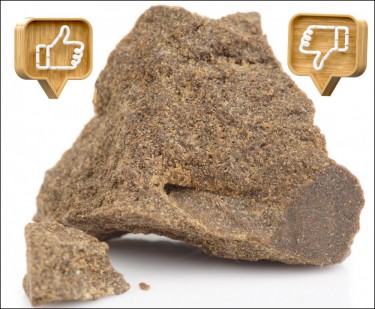
What is hash? – The guide to the different types of hash on the market today
A guide to the different types of hash
Hashish, also known as hashish, is one of the most well-known types of cannabis concentrates that actually has a long history.
In fact, hashish has been used in the Middle East for many generations. They used it for both religious and medicinal purposes. The first mention of hash dates back to 12th-century Cairo, although hash and cannabis are believed to have been transported from East Asia to the Middle East along the Silk Road. Today, hashish is still produced on a large scale in Morocco, where Berber tribes from North Africa are said to have introduced this concentrate.
Sometime in the 1960s, hash production in Morocco became famous as part of the Hippie Trail. Travelers from across Europe and the United States made their way to Central Asia to enjoy easy access to cheap drugs that were illegal back home. Hashish and cannabis were a favorite treat for them and are still consumed around the world today. Today, however, hash has taken many forms, about which we will learn more.
Essentially, hash is mostly resin with trichomes, the potent parts of the cannabis plant that store most of its terpenes, flavonoids, and cannabinoids. Not only is she the powerhouse of taste, but also the strongest highs thanks to the resin produced by female cannabis plants. When the trichomes are separated from the cut and bud, it can be used to make the potent extract we know today.
types of hash
-
Dry pin hash: Made by sieving dried cannabis buds and trimming them through fine sieves, dry-sift hash is made with a gentle rub that turns the trichomes into a fine powder known as kief. The kief is then pressed to create blocks, although the process for making them into blocks varies by geographic region.
For example, Moroccan hash is made by repeatedly pressing kief using heat and pressure. Meanwhile, hashish is made in Pakistan using a similar method, although some processes involve curing the hashish in dried goat or sheep skin, which is believed to enhance the flavor. Then in Afghanistan, kief is mixed with some tea to create a dough, which is then kneaded over low heat until it has a thick consistency and black color.
-
finger hash: Also known as Indian charas, this is one of the oldest known methods of making hash in India. Charas were always the original concentrate originating in India, from where other types of hash evolved. The traditional forms can still be found in India, although they are now banned by law, which has not prevented local people from using and handling them.
No fancy equipment is required to make finger hash or charas as all you have to do is rub the fresh buds repeatedly between your thumbs or your palms to make it. It is quite labor intensive to make finger hash, although the end result is worth it. The process is designed so that you can collect the buds rich in THC on your hands. After that it can be scraped off. When temperatures are colder, the hash can solidify. Finger hash is usually very dark green, almost black.
-
bubble hash: Bubble hash is made using the water extraction method, which involves inserting several small sieve bags of different sizes inside each other. They are then placed in a bucket or other container. Dried or fresh cannabis plant material is stored separately in a mesh bag using a larger screen size of at least 220 microns or larger.
The container holding the cannabis is then placed in a bucket or other purpose-built machine filled with very cold water. The water is stirred, causing the crystals to freeze and then harden, which are then suspended in a solution. The resulting mixture is placed in a bucket and then passed through the smaller screen sizes, separating the larger residual material.
This technique can be used to make different types of hash, although using the finest screen size of around 25 to 45 microns can yield the best quality.
-
temple balls: Temple balls found in Nepal and some parts of India are similar in texture and appearance to chocolate truffles. This is all made from the thick, dark resin scraped from the trichomes, which are then glued together to create balls and sometimes sticks.
Temple balls sometimes start out the same way as bubble hash, but they are then compressed and then subjected to heat, causing the trichome heads to burst. This process releases the terpenes while also activating the cannabinoids, while the pressure makes them more flexible and malleable. Many enjoy making and consuming these types of hash as they are so much easier to work with.
Consuming different types of hashish
Given these popular forms of hash, you might be wondering how to consume them.
The truth is that consuming hash is versatile and easy. You can even vape or smoke them simply by placing them on a vaporizer or on a screen. Many cannabis connoisseurs mix hash with cannabis flowers in a pipe bowl and smoke it at the same time, as the presence of hash makes this a more potent smoke, reducing the need to smoke more to achieve the desired high.
Joint enthusiasts also like to add small bits of hash and sprinkle them around the joint. You can also decarb her by quickly adding some hash in the oven and then adding it to each meal for some potent edibles.
MORE ABOUT HASH, READ HERE…

A HISTORY OF HASH – WHERE DID GOLD ROLLED BEGIN?
OR..

WHAT IS HASH AND IS IT THE SAME AS HASH? CLICK HERE!

Post a comment: